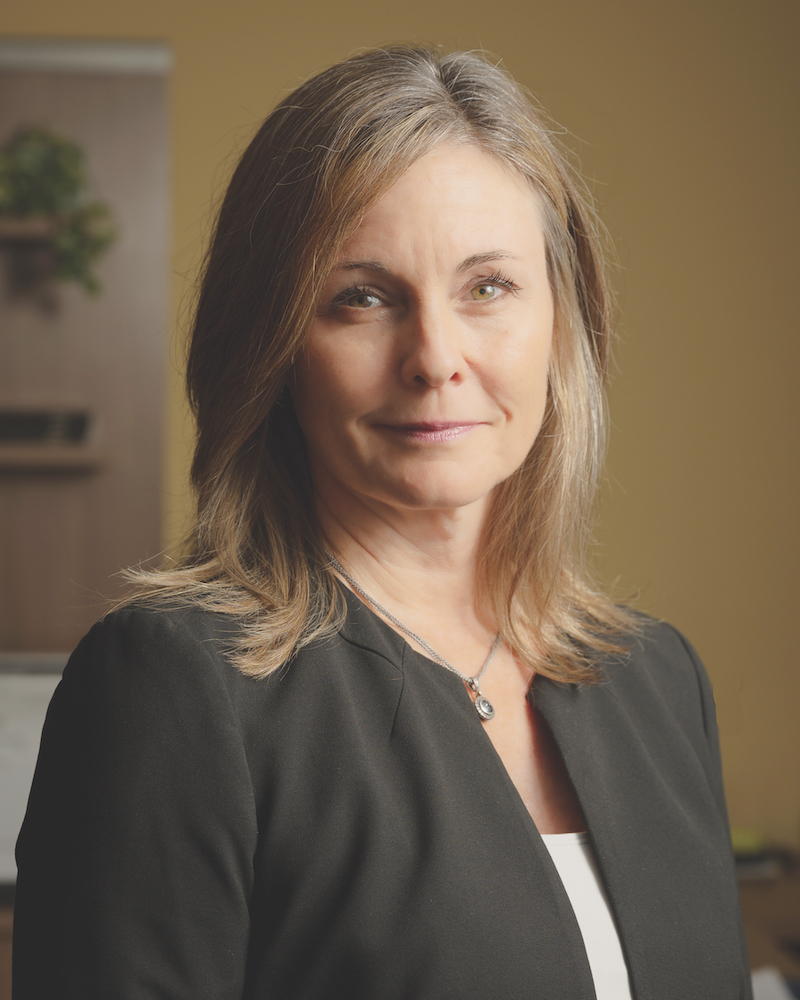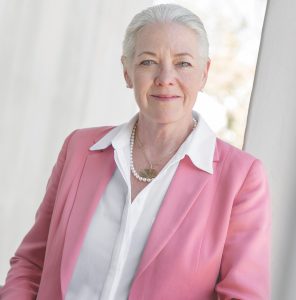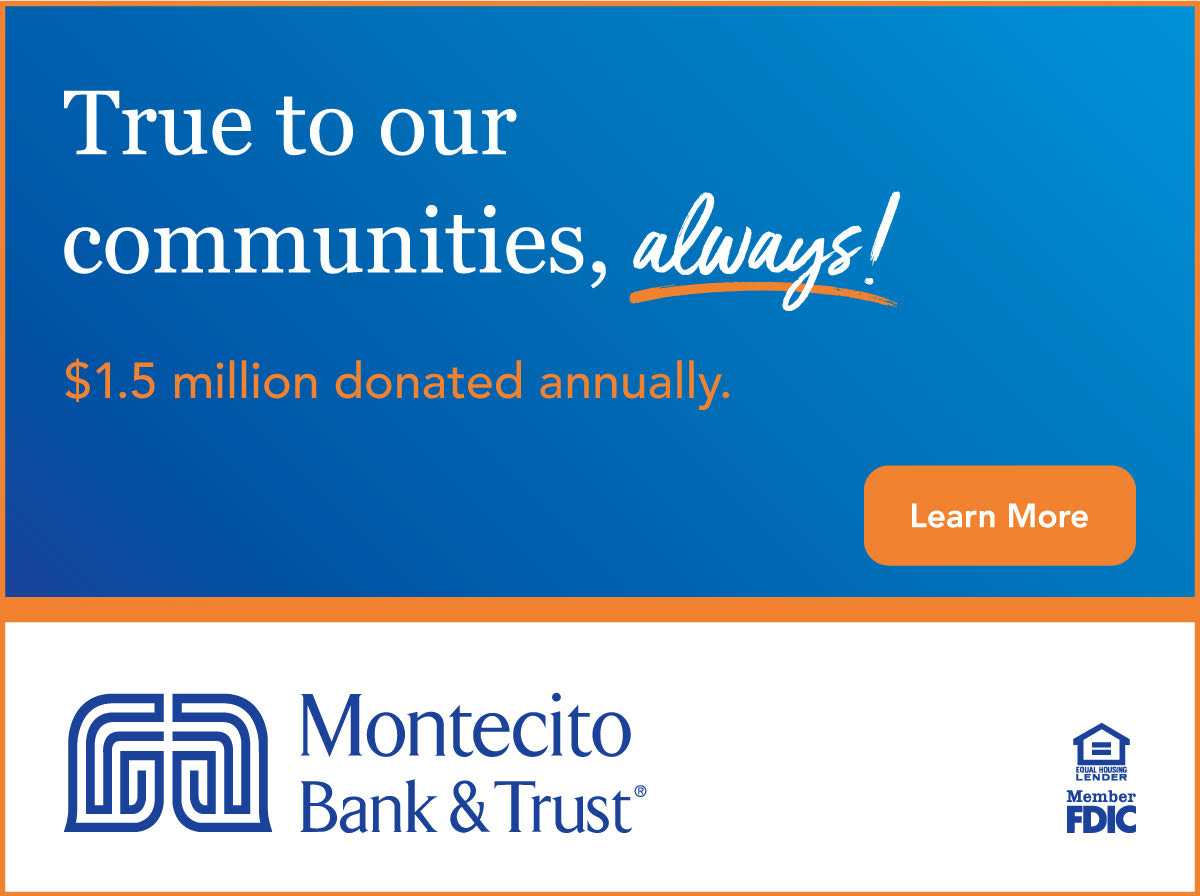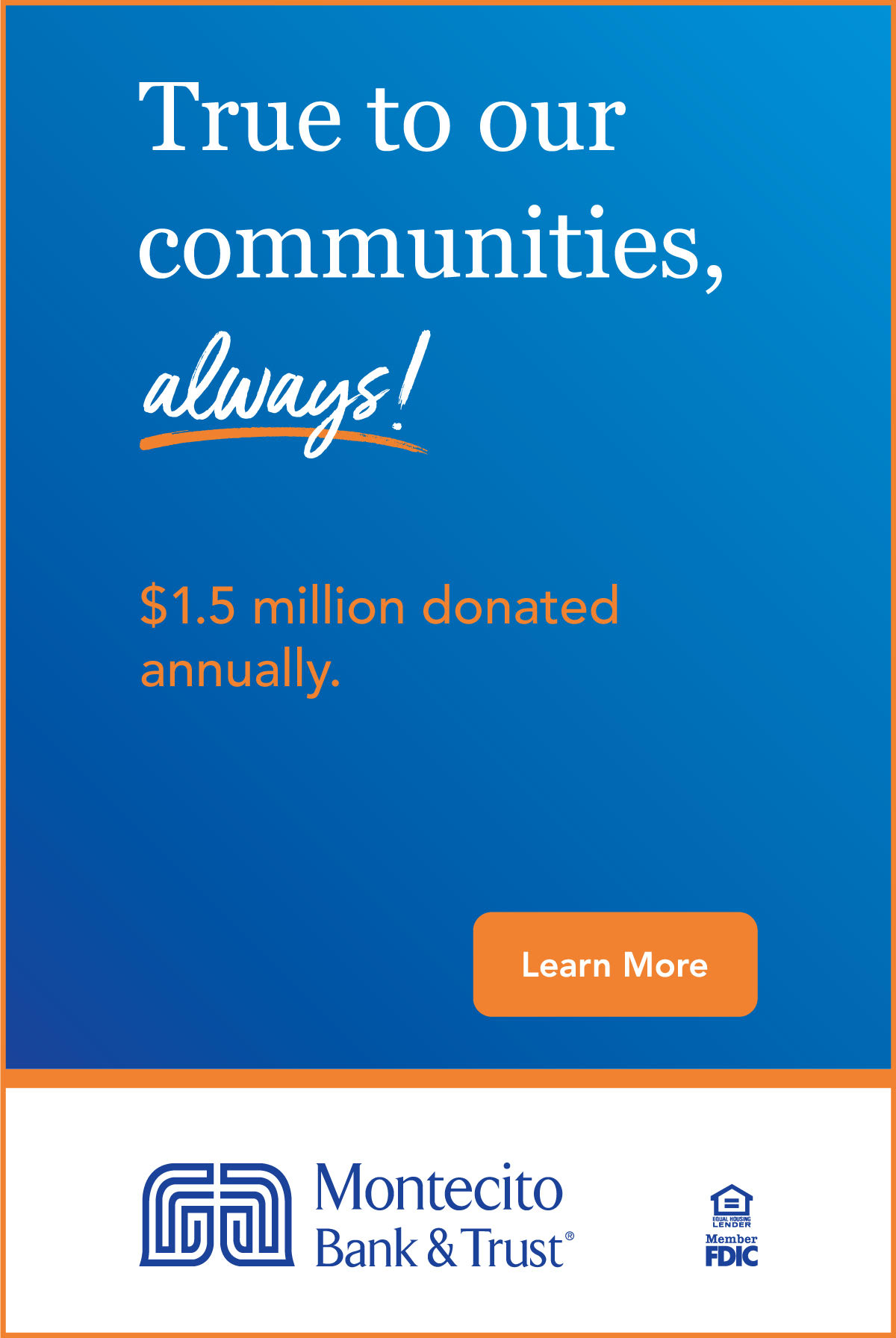Jackie Carrera Puts the ‘Community’ in Santa Barbara ‘Community’ Foundation

Jackie Carrera’s powerful sense of community started with her family, long before she moved from Maryland to California and eventually settled on the Central Coast. Today, ours is the community that the Santa Barbara Foundation CEO spends much of her time contemplating.
“I was raised by a second-grade teacher. We had a close-knit family with four kids. My family was my first community. And we all had a role in it. Whether it was vacuuming on Saturday mornings or doing the dishes every single night, we all worked and contributed to our home life. I came to understand that whether it was my classroom, my sports team, my student council, my workplace – these were all forms of ‘community’ and everyone had something to contribute and a role to play.”
It was while in college studying finance at Loyola University in Maryland that Carrera began to understand that community extended into a larger world, which included those with very different life circumstances.
“I was in an ethics class and the discussion was about homelessness; it was actually a debate. I thought, ‘How do you debate homelessness? What is there to debate?’… Some of my classmates were saying, ‘They (aka, other) need to pull themselves up by their bootstraps and get moving.’ And I was really disturbed… I thought ‘major disconnect here.’ What if that person can’t take care of themselves? Who chooses to be on the street? This is not a sign of a healthy person who has the support of a community that is able to get themselves back to where they need to be. I was pretty upset, and went ranting back to my college roommates. And one roommate turned to me and said, ‘So what are you going to do about it?’ And I was stopped dead in my tracks.
“That was when I first thought, ‘I can and need to do something.’”
Carrera believes that it’s not so much about giving back because something was given to you. It’s about naturally being a part of a community and playing a role, your very own role. For Carrera, the crux of it all is community. So, it makes sense that she finds herself leading the Santa Barbara Foundation, a central hub for Santa Barbara’s local philanthropic and nonprofit community and the people and causes they serve. From this perch, Carrera has a bird’s-eye view of how philanthropy works in this town, and strong opinions on what are the most important issues facing a place she calls “a little slice of heaven.”
Q: So, how is Santa Barbara as a philanthropic community?
A: In Santa Barbara County, the extraordinary sense of care for others is palpable. Whether it’s grappling with a community issue or working with philanthropists who want to understand better how they can support others, I have the privilege of being immersed in all that is really wonderful about Santa Barbara. Just like everywhere, there are issues, but here, we’re oriented toward solving those problems together. I see it from many angles and I can’t emphasize enough how generous this community is.
Q: As the head of a community foundation, how do you decide who and what to support?
A: First, we listen to many people who guide us in developing a strategic plan that helps us determine what to prioritize and where to focus our discretionary dollars and staff effort. Second, we have hundreds of donor-directed funds which extend our support to nearly every issue area imaginable. Our relationships with our nonprofit partners are key. They help us understand the issues and where the greatest challenges are. What I love about community foundations is that because of our many partners, we are able to see both the challenges as well as the critical interventions – and even solutions.
Q: What are the key things you consider that help you decide to give funds to an organization?
A: For grants that we make with our discretionary resources, we view every proposal holistically. It’s about so much more than just the specific request. Each request is an opportunity to learn about an organization’s mission, leadership, and its capacity, as well as the feasibility of what’s being proposed. We also look at how that work aligns with community needs, our strategic plan and the resources we have available. We also assess our ability to interest other donors who might be willing to fund alongside or in addition to us. And, of course, we consider the issue that the organization is trying to address and the impact they can have.
Our decisions are informed by grant committees made up of seasoned and emerging philanthropists, experts in a particular field, and staff. In 2018, we established the Collaboration for Social Impact so that we have a vehicle to assist organizations with capacity building and ensure its leaders have the knowledge, skills, and resources to fulfill their mission. It’s important to us that this work is guided by practitioners – nonprofit executives who are leaders in the field.
Q: What role can philanthropy play in moving the needle on systemic issues like racial and gender equity?
A: Philanthropy can raise awareness, identify barriers, and invest in plans to address those barriers, whether it’s in our own organization or in how we invest. Our entire sector is about charitable contributions and tackling community issues. It’s impossible to do that if we are not really looking at our entire community and what’s preventing them from thriving.
Q: How does that look for the Santa Barbara Foundation?
A: This is an evolving journey.
For us, equity isn’t about making a statement, though we have when we needed to. Our organization has been for quite some time committed to diversity, equity, inclusion, and access in our grantmaking and internal operations, but we have never had a mechanism to act on that formally or understand how we are doing. In May 2020 with George Floyd’s murder, we doubled down on our own commitment to what we had been doing informally. We started by taking stock with an honest and thorough independent assessment of our progress toward diversity, equity, inclusion, and access (DEIA).
We set up a task force made up of board and staff members. We examined our county’s demographics and our organization’s history, we looked at what other community foundations are doing in this space around the country, and then looked at how well our strategic plan incorporated DEIA as a pillar. We went through a rigorous process of stakeholder interviews and very broad-based input. We are now in the process of prioritizing and adopting recommendations.
Q: So, you’re modeling what you’re asking other organizations to do.
A: And sharing what we have learned. We also have a small capacity building grant program through which we fund organizations to conduct DEIA work.
Q: How do you measure ROI (return on investment) in your grant making?
A: This is such a great question. We think of this in terms of impact, or outcomes. After much consideration, we chose to measure our outcomes using a system called Results Based Accountability. This system poses the questions: What did we do? How well did we do it? Is anyone better off as a result? The first two questions are relatively easy to answer. However, the way we collect this data has become more meaningful. Rather than asking for solely quantitative outputs, especially from our grantees, we look for qualitative information. We’ve changed our reporting process to include interviews. This allows us to understand how a grant enabled an organization to build their capacity to become stronger as an entity. The interview allows us to understand what their challenges are, and connect them to peers to be able to facilitate cohorts and peer learning as they go.
The last question – is anyone better off? – requires us to have a baseline understanding of community level indicators. Our community is working toward that in a variety of issue areas, and we hope to be able to measure our investments against that baseline at some point.
Q: So, do you support trust-based giving?
A: Absolutely. That’s the core of it. There’s nothing like someone who is not in your world coming in and telling you how to do it. It is about viewing our relationship with our nonprofits as a partnership and listening to the experts and leaders on the ground to make sure that our values – of centering community – actually show up in the way that we do our work. That really is the only way we in philanthropy can advance equity and opportunity.
Q: Are you more likely to bet on a person or on an idea?
A: I have a theory that at least 60% of the success of an idea is in the people behind it, and the rest is in the idea itself and sometimes other variables.
We’ve had a lot of great ideas here in Santa Barbara for how to solve homelessness, deal with affordable housing, fix childcare. I’m not sure when we’re going to get there, but right now there’s a feeling that the people and the resources are coming into alignment around some of these things, which is a great feeling because nobody wants to be on a wheel just spinning, spinning around and not going anywhere.
Q: What issue do you think is most key right now in this community?
A: Housing. The cost is crippling to individuals and families. It doesn’t matter if you recently graduated from UCSB or you grew up here or you just moved here, most are struggling to stay here because of the cost of housing.
Community is made up of lots of diverse people. There are people in different stages in their life. There are people from different socioeconomic backgrounds. There are people from different places, cultures. If you don’t have a mix of housing and opportunities to make a healthy income, you’re preventing the diversity that you need to create that vibrant, healthy community life.
Q: If you could wave a magic wand and change anything in Santa Barbara, what would it be?
A: An evolved appreciation for understanding one another. There’s a line of a song that has always resonated with me: ‘Once in a while you get shown the light in the strangest of places if you look at it right.’ It’s about being open to different, new perspectives. Another one of my favorite sayings is ‘seek not to be understood so much as to understand.’ Being open to learning about and understanding somebody else and ultimately getting to know that person, or organization, or culture – and truly valuing the differences – is part of what creates a healthy, thriving community. That right there removes a barrier that has prevented so many people from just simply getting along and being able to live together in, dare I say it, harmony. But it takes intent. It takes work. It takes courage because you have to be willing to acknowledge your own belief system and to challenge those beliefs and assumptions about yourself and others. And then ultimately recognize that your differences are what make life so rich and wonderful and fulfilling. We all have something to learn from each other if we just take the time and realize the value in that.
So that’s my dream, and we start by realizing the value of understanding one another. There will always be issues but with a shared set of operating principles like this, chances are greater that a community will be able to effectively address even its most significant challenges.


